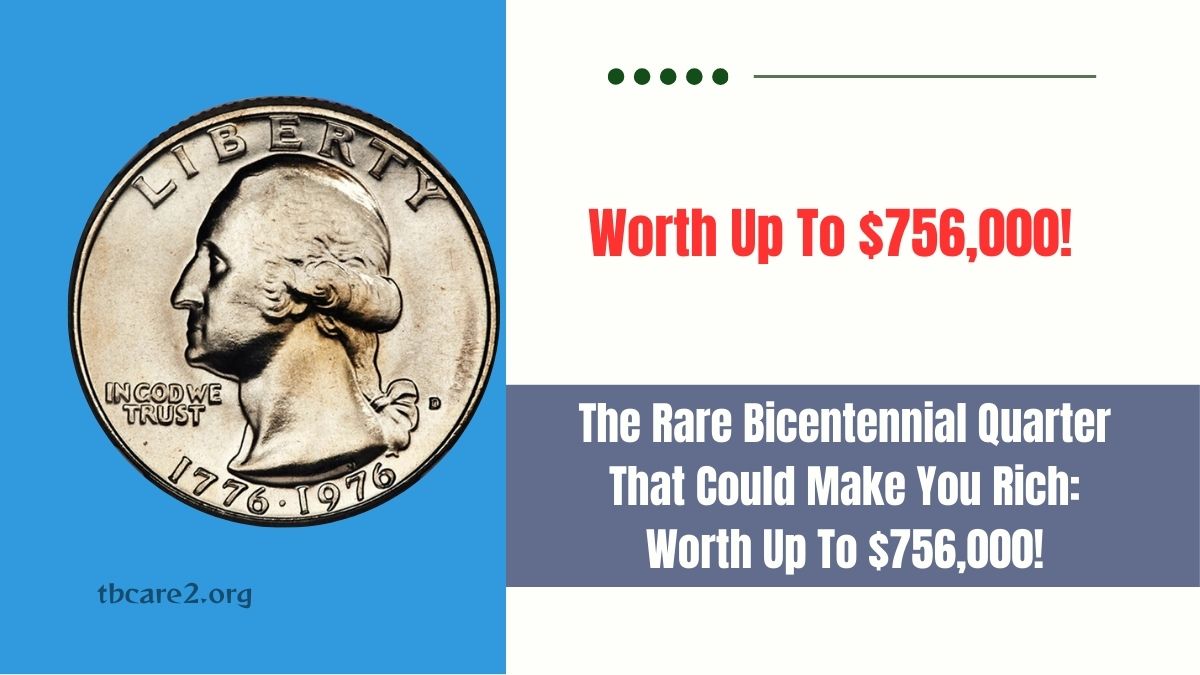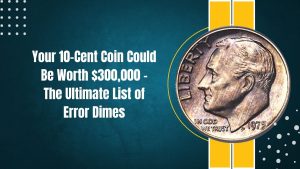When we think of valuable coins, our minds often drift to ancient relics or limited-edition collectibles. Yet, one of the most unassuming treasures lies in the familiar Bicentennial quarter.
Originally minted in 1976 to commemorate the 200th anniversary of American independence, these quarters are now known to carry significant value—some examples even fetching up to $756,000.
This article will explore the unique features of these quarters, why certain ones are exceptionally rare, and how to determine if you have one that could make you rich.
Contents
1976 Bicentennial Quarter with Proof and Error Varieties
Not all Bicentennial quarters are worth thousands, but special varieties can be highly valuable. Proof coins, which were struck with extra precision for collectors, and coins with notable minting errors are particularly sought after.
Some of these error coins display double-die features or other striking irregularities, which drastically increases their value. In top conditions, these can bring in tens of thousands of dollars
1976-S Silver Bicentennial Quarter
While most Bicentennial quarters were struck in copper-nickel, the 1976-S version minted in San Francisco contains 40% silver. These silver quarters were primarily issued in special collector’s sets, making them far less common in everyday circulation.
In pristine, uncirculated condition, a silver Bicentennial quarter can command thousands of dollars. Collectors especially seek high-grade specimens certified by a reputable grading service.
Silver versions are often more difficult to find, which adds to their demand and price. The 40% silver Bicentennial quarter stands out among collectors not only due to its precious metal content but also due to its relatively low production compared to the standard copper-nickel version.
1976 DDO Bicentennial Quarter
One of the rarest varieties is the Double Die Obverse (DDO) Bicentennial quarter, where a doubling effect can be seen on the lettering or date on the coin’s front.
These errors are rare and highly collectible, with prices reaching into the hundreds of thousands when they are well-preserved. A high-grade DDO Bicentennial quarter can be the ultimate find for a collector, with potential values that rise with coin grading quality.
These coins are especially coveted because the error makes them a one-of-a-kind item. The doubling is subtle but noticeable, especially on the “LIBERTY” text or the date of the coin.
These error coins are often valued higher than standard Bicentennial quarters, even if they are not made of silver or proof.
| Coin Type | Key Features | Value Range | Additional Information |
|---|---|---|---|
| Proof Coin | Extra detail with smooth finishes | Up to $1,000 for regular; higher for rarer grades | Issued for collectors, less circulated |
| Error Coins (Double Die) | Visible doubling of design | Up to $500,000+ depending on quality | Highly rare and sought after by collectors |
| 1976-S Silver Quarter | 40% silver content | Up to $5,000+ for pristine conditions | Released in limited sets, not common in circulation |
| 1976 DDO (Double Die Obverse) | Doubling on date or text | Up to $756,000 for top-grade coins | Extremely rare, valuable in perfect condition |
Why Are Bicentennial Quarters So Valuable?
Bicentennial quarters hold both historical significance and collector interest, making them particularly valuable in certain varieties. The 1976 Bicentennial quarter was issued to commemorate the 200th anniversary of U.S. independence. The dual-date “1776-1976” is a key feature that makes the coin instantly recognizable and collectible.
Moreover, some quarters contain minting errors or special finishes, which only add to their rarity and value. When looking at the market value, collectors often focus on condition, design accuracy, and unique minting features such as errors and silver content.
How to Identify Valuable Bicentennial Quarters
If you come across a Bicentennial quarter, it’s worth examining it closely—especially if it’s in excellent condition or shows unique characteristics like doubling or a silver finish. Here’s what to check:
- Mint Mark: Ensure the mint mark is correct. Look for “P” (Philadelphia), “D” (Denver), or “S” (San Francisco).
- Proof Coins: These will have a glossy, sharp finish and are often sold in sets.
- Error Coins: Look for signs of double die, misalignments, or other irregularities in design.
- Silver Quarters: Check the color of the coin; silver coins will have a distinct hue.
The Bicentennial quarter is more than just a symbol of U.S. independence; it’s a hidden treasure for coin collectors. From error coins to silver variants, these coins can fetch astronomical values depending on their rarity, condition, and minting features.
If you’re lucky enough to find one of these valuable Bicentennial quarters, you may be holding a piece of history worth a small fortune. Always remember to consult a professional grader to assess the true value of your coin. Happy hunting!
How much is a regular Bicentennial quarter worth?
A typical Bicentennial quarter in circulated condition is worth face value (25 cents). However, proof versions or those with errors may be worth much more.
What makes the 1976-S silver quarter valuable?
The 40% silver content makes the 1976-S quarter more valuable, especially in uncirculated or high-grade condition.
What is the rarest Bicentennial quarter?
The 1976 DDO Bicentennial quarter, with its unique doubling effect, is one of the rarest and most valuable, with some selling for hundreds of thousands of dollars.







